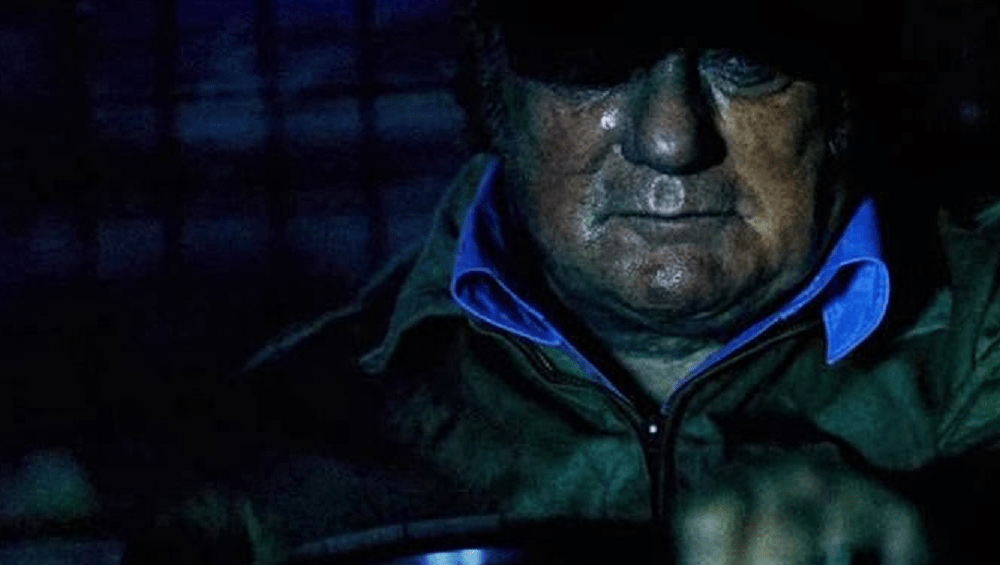5 Reasons Why French Horror Movies Totally Slap

The month of March sees French horror descend onto streaming platforms like it’s ravenous for a revolution, or something else equally French. So strap in everybody, because French horror cinema is one of the most hardcore horror houses in the world, with many of their films too much for some to stomach. Both Martyrs and Irreversible saw people at Cannes leave the theater because when these filmmakers decide to show violence and brutality in its human form, they do it unflinchingly, unapologetically, and, most provocatively, uncensored. Not many horror movies challenge their audience like French Scares do, and we have as little of an escape as the poor, poor characters suffering onscreen do.
The excellent Titane is currently on Hulu if you want to watch an award-winning horror featuring literal car sex. Shudder will be hosting a collection of French horrors this March, including many titles that fall under the New French Extremity — a perceived movement coined by James Quandt in 2004 that refers to transgressive 21st-century French films that combine art house and horror. Basically, imagine familiar and conventional fears and horrors (like aging, or fear of other people) as a singular, probably naked human body. Now imagine seeing that body slowly being squeezed through a meat grinder, alive and screaming something profoundly poetic, just to learn what comes splattering out the other side. That is, like, Act One of a New French Extremity film.
The French Might Just Be The Kings Of Body Horror
Don't Miss
It'd be an understatement to say that French films like their body horror — they absolutely adore it and they have a lot to say about it, too. From Julia Ducournau's cannibal horror Raw which sees a young vegetarian woman discover an insatiable hunger for human flesh while enrolled in veterinary school, to In My Skin showing a corporate player becoming fascinated with her insides, it seems the French can take practically anything related to the human body and churn out the horror like it's second nature.

In My Skin/Canal+
Add Martyrs, Inside, and Revenge to the list — all of them high rated French horrors — and it's clear that body extremities are one of their favorite subjects. It makes sense since French culture is known for being more open-minded, inquisitive, and arguably more expressive when it comes to sex and nudity. They've always been pretty blasé about showing skin on screen. It's just not that big a deal to their audiences (in general, naturally). And it's precisely this different, frankly refreshing type of attitude toward the human body that makes their many takes on it so fascinating to watch.
Of course, it's also much more than just plain ol' body horror for the sake of shock and gore. These movies confront taboos, fragility, pain, endurance, sex and gender identities, and all-around anxieties our bodies are able to unleash upon us — most of which we have no control over. Ducournau's other horror movie, Titane, probably illustrates all of this best when it tells the story of a character on a journey of self-discovery who has sex with cars, gets impregnated by one, and soon has to deal with the horrific bodily changes that involve oil dripping out of every other orifice. To non-horror or anti-subtext fans this might sound like total schlock, we guess. It did, however, win the Palme d'Or at Cannes.
Their Understanding (And Unique Way) Of Storytelling
From the most beautiful, splashy, popping colors …

Revenge/Rézo Films

Titane/Diaphana Distribution
… to the dirtiest and grittiest of pallets and textures:

High Tension/EuropaCorp

Frontier(s)/EuropaCorp
From unique camera angles like the anxiety-feeding upside-down sequence we had to endure in Climax …

Climax/Wild Bunch
… to the unique spinning camera movement that depicts time rewinding in the backward chronological movie, Irreversible, the French have a special kind of understanding and a thorough grasp of visual storytelling. While so many horror movies go for quick bursts of gore and long shots that seem to care more about the cheap jumpscare at the end of it than the complex emotionality found inside the build-up/dread, French horror gets all of that. And they use it, successfully, to royally screw with our senses.
Of course, visual and audio go together like blood and lust, and the audio landscapes in these movies are just as impressive as they are hair-raising. In Climax — a movie about a dance troupe who get their party punch spiked and start tripping their everything off, only not in a fun way — music naturally plays a central role because, after all, it's a dance troupe. It's in the way the music plays a menacing, almost villainous part that takes these elements from the obvious to the masterful, and most terrifying.
In Irreversible, a shocking piece of cinema starring Monica Bellucci and Vincent Cassel that illustrates and warns about man's destructive tendencies, director Gaspar Noé used a background frequency of 28hz, an effect that's been designed to make its hearer feel sick. During the entire opening act, this frequency includes a siren sound which, even though you may not hear it clearly, is part of the soundscape and added deliberately to make sure you're feeling exactly what you're supposed to feel (which is close to maybe calling an ambulance yourself). Also, Thomas Bangalter from Daft Punk composed most of the music, so you know it's just that freaking good.
Honestly though, it’s no great surprise that the French are naturals in the visual storytelling department. After all, the first acknowledged film director ever was the French illusionist Georges Méliès. You might know him for making that cute little moon movie.
What you might not know is that, even before A Trip to the Moon, he made the first-ever horror movie in 1896.
They Continuously Challenge Audiences
Before Alexandre Aja's 2003 slasher film High Tension was released in the United States, it had to go through some good ol' censorship first. See, some folks didn't appreciate all the blood and gore of this new French style of blood and gore, and scenes like the dad's decapitation had to be cut so it occurs offscreen because apparently they were afraid people would … faint? Vomit? Denounce the president? What was 2003 like again? Pretty lame, it seems, because when you read some of the critical opinions of High Tension from back then, American audiences seem downright prudish. Some called the original and twisty slasher movie "French trash" while their own country produced yet another yawning version of The Texas Chainsaw Massacre, that Freddy vs. Jason experiment — which was fun, sure, but come on — and also another Leprechaun movie for some reason.
Oh, and here's the supposedly shocking High Tension scene — one of many that had to be cut to get the rating down so it could have a proper U.S. release:
An aversion to blood in horror movies or whatever aside, another point that critics couldn't stop yelling about — including the late, great Roger Ebert — was how the film didn't make sense to them. See, the movie's big twist is that the killer and our lead protagonist were the same person all along! Gasps in French! It's sort of like Identity (that also came out in 2003), only it's played like a home invasion with both sex and violence being the cause of, well, all the high tension.
It seems that because of this dual, dissociative personality depiction —a great choice to add at least some commentary on sex and violence in the short little slasher movie — some critics and audience members didn't seem to understand how our lead could possibly be the killer too. They wanted it to be literal, with everyone being in the same location at the same time, always. Some also wanted the movie to be less cerebral, less clever, with one critic who gave the film a rotten score actually saying, "An extremely well-made, very grisly and ultimately dishonest slasher film that's too clever for its own good."
If you ask me, the reactions were so bad because it seems they all watched the awful and excruciating dubbed version, which no human should ever watch.
But that's French horror for you, continuously challenging and confronting audiences and being uncompromising in showing us the dark, twisted, and often grotesque nature of complex human beings. Irreversible, for instance, is a lot of things, but at the center of the film is a clear attempt to deconstruct human relations and find out how and why sex and sexuality destroy as equally as it creates. It posits that intimacy isn't simply the love between two people — it can be violent, brutal, and destructive. The New French Extremity movement is about holding up these dark truths no one cares to look at or even talk about, and protesting its naturalization in society.
This brings us to the fact that …
French Films Have A Lot To Say (And They Sure Say It)
Both Irreversible and Titane do something structurally interesting: The first half of both films play like the climax of a normal, paint-by-numbers genre structure. Both movies serve up the horror immediately and in your face, as if to say, "Cool you have your horror, now check this out." Both then proceed to become more intimate and almost sweeter as the stories zone in on two characters, their relationship, and their identities in relation to one another. The horror's still there, no doubt, but it takes a different, more contemplative approach that leaves the viewer perhaps a little more thoughtful and a little less horrified by the time the credits start rolling.
It gets more nude, too, suggesting that while we're used to the narrative of sex leading to violence, maybe getting the violence out of the way first could make us look differently and more closely at sex and intimacy and what it does to us as individuals and our relationships.

Titane/Diaphana Distribution
The bottom line is that French horror doesn't push its characters — and essentially, us — to extremities simply for the sake of it. Calling a movie like Martyrs torture porn, for instance, would be missing the point of the film entirely because there is nothing even remotely salacious about the torture here. It's about pain and the idea of transcending it and what can be found on the other side of trauma, if anything. It is arguably the antithesis of torture porn as it doesn't cheapen the subject matter by focusing on the entertainment aspect of filmmaking. It doesn't leave us, the audience, feeling exhilarated in the least. On the contrary, all we are left feeling is a deep-seated and unsettling emptiness that, horrifically, feels like it's always been there.
Now that is some smashing and poetic horror right there.
French horrors do what the French do best: They get philosophical, cerebral, psychological. Meander, a quick little 90-minute horror that was released last year, is basically "What if Cube but a mother's grief?" And while Titane looks at the horrors of the body that mocks us in our inability to control its brutal functions, it's also very much about care, acceptance, fragility, and a tender nature that lies beneath our corrupted surfaces. The French understand how complex human beings are.

Titane/Diaphana Distribution
And finally, French horror absolutely slaps because, well …
They’re So, So Horny
Just like everyone else, only so much more open and honest about it. Vive la France.
For more opinions about horror and also everything else, follow Zanandi on Twitter.
Top Image: Diaphana Distribution